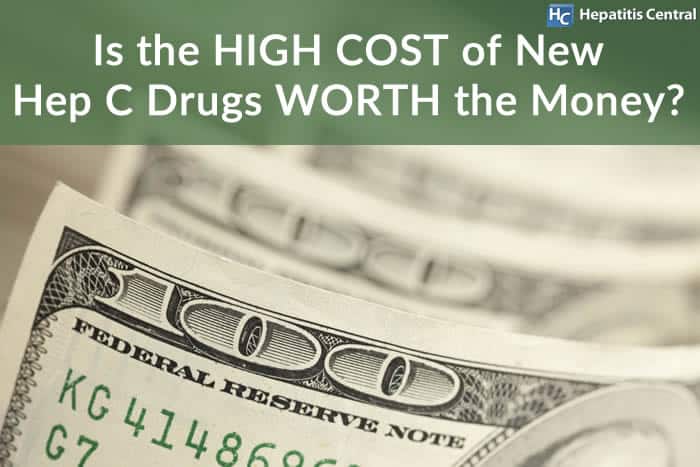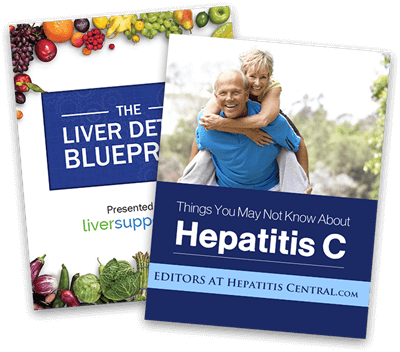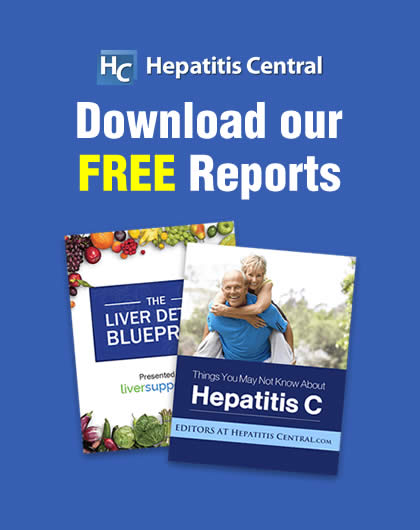Is the High Cost of New Hep C Drugs Worth the Money?


Updated November 8, 2019
Those who had previously resigned to a lifetime of battling the chronic Hepatitis C virus have hope. While the new drugs currently boast over a 95 percent chance of viral eradication, their extremely high price tags can make them grossly restrictive. Despite their astronomical cost, an analytic model has determined that the Hepatitis C all-oral drug regimens are an economically sound investment.
Hepatitis C Medication Evolution
Previous to 1989, Hepatitis C had yet to be identified and was merely known as Non-A Non-B Hepatitis. Below is a general timeline for the more prominent medications used to fight the Hepatitis C virus and their effectiveness:
- 1991 – Although this type of interferon had a low success rate, the Food & Drug Administration (FDA) approved Intron A (interferon alfa-2b), the first treatment for Hepatitis C.
- 1998 – Used alongside interferon alfa-2b, ribavirin is approved by the FDA for treating Hepatitis C.
- 2001 and 2002 – Slight improvements were made to interferon and ribavirin medications, but the treatment success rate remained at or below 50 percent. Side effects were often severe.
- 2011 – To be added to pegylated interferon and ribavirin therapy, first generation triple therapies were approved by the FDA; namely boceprevir and telaprevir. Treatment success rates began to pass the 50 percent mark, but not without some challenging side effects.
- 2013 – Also added to pegylated interferon and ribavirin therapy, second generation triple therapies were approved by the FDA: sofosbuvir and simeprevir. Treatment success rates climbed even higher (some groups achieved success rates in the 90th percentile), but the pegylated interferon and ribavirin side effects remained problematic.
- 2014 – Finally getting rid of the pegylated interferon injection, all-oral treatment for Hepatitis C becomes FDA approved. The ledipasvir/sofosbuvir (Harvoni) was approved first and was soon followed by ombitasvir/paritaprevir/ritonavir and dasabuvir (Viekira Pak). Treatment success rates soar to 95 to 100 percent in certain populations.
- 2015 – Maintaining a very high treatment success rate, the momentum of all-oral regimens builds with the approval of daclatasvir to be used with sofosbuvir and ombitasvir, paritaprevir and ritonavir (Technivie) with ribavirin for genotype 4 without scarring or cirrhosis.
- 2016 – All oral Hepatitis C drugs released in 2016 targeted harder to treat populations. Elbasvir/grazoprevir (Zepatier), with or without ribavirin earned FDA approval boasting treatment success rates up to 97 percent for genotype 1 and up to 100 percent for genotype 4. Sofosbuvir/velpatasvir (Epclusa) was approved for genotypes 1 through 6.
- 2017 – The two medications released include a combination of glecaprevir and pibrentasvir (Mavyret) as an 8 week oral treatment for all HCV genotypes without cirrhosis and treatment-naive with estimated success rates from 92-100%, while combination therapy sofosbuvir, velpatasvir and voxilaprevier (Vosevi) was the first once-daily, single tablet approved for genotypes 1-6 who were previously treated with sofosbuvir indicating success rates between 96-97%.
Since 2014, the all-oral Hepatitis C treatment regimens are boasting very high success rates. However, the cost of some treatments is staggering – costing up to $147,000.
The Study Claiming Hep C Drugs Are Economically Sound
Using a decision-analytic Markov model, investigators analyzed the therapeutic benefit and total treatment cost with the quality-adjusted cost of care associated with treatment regimens for Hepatitis C genotype 1. At that time, four approved regimens in treatment-naïve genotype 1 chronic Hepatitis C patients were compared:
- Pegylated interferon and ribavirin – the old standard of care that yielded a 50 percent treatment success rate
- First generation triple therapy – boceprevir + pegylated interferon + ribavirin
- Second generation triple therapy – sofosbuvir + pegylated interferon + ribavirin and simeprevir + pegylated interferon + ribavirin
- All oral direct-acting antiviral regimens – ledipasvir/sofosbuvir (Harvoni) and ombitasvir /paritaprevir/ritonavir /dasabuvir (Viekira) ± ribavirin
The researchers measured the cost of treatment against the patient’s adjustment in years of living a quality life. They valued one quality year of life at a worth of $50,000. As published in the journal Medicine, the all-oral therapies provide the most economic benefit. Although the all-oral therapies increase Hepatitis C drug costs by nearly $50,000, the number of quality years it adds to a patient’s life is financially worthwhile. Despite being funded by one of the pharmaceutical companies behind an all-oral regimen, the impact of this analysis is poignant.
Allocating a monetary amount to each year living a high-quality existence may seem arbitrary and materialistic, but it is an economist’s approach to determining long-term value. Based on this financial analysis, forking over the big bucks to eliminate Hepatitis C with an all-oral treatment regimen is worthwhile for both the patient and their economic value to society.
Medications to treat Hepatitis C – A timeline. (n.d.). Retrieved November 08, 2019, from https://www.hepatitiscentral.com/medications-to-treat-hepatitis-c-a-timeline/
A simple treatment regimen for hep c. (n.d.). Retrieved October 23, 2016, from http://www.harvoni.com/discover-harvoni/clinical-study-results
Younossi, Z. M., Park, H., Dieterich, D., Saab, S., Ahmed, A., & Gordon, S. C. (2016). Assessment of cost of innovation versus the value of health gains associated with treatment of chronic hepatitis C in the United States. Medicine, 95(41). doi:10.1097/md.0000000000005048








21 Comments
One very important point that no one seems to be reporting on at this point is that anyone whose HepC began with a HepB infection can develop a recurrence of the HepB while taking the new HepC drugs. This can result in death.
There was an article on it on this site http://www.hepatitiscentral.com/news/fda-now-requires-boxed-warning-on-hcv-drugs-harvoni-sovaldi-daklinza-and-more/
I have taken Harvoni and believe to be cured at the current time. However, I don’t think this justifies the price. I honestly view it a pure greed to charge such an outrageous price for any medication. It’s in pill form and clearly not that expensive to produce. My insurance did cover the medications, after 2 years of requests. However, I took Harvoni for 12 weeks at a cost of $100,200. I also have to point out the fact that this medication is much cheaper in other countries.
I have had two lots of failed treatment with the old interferon ribovaron and solfavin not sure if I’ve spelt it right I read that solfavin can cause liver cancer which I now have. I’ve been told a new treatment will be available in January can any one tell me how successful this treatment is with genus type 2 thank you Christine.
Epclusa is available now. and is suppose to work well with all genotypes 1-6. I have 3 and finish epclusa and rivavrin for 12 wks all is clear just have to wait the 11 more weeks to see if it stays gone. Gilead the manufacturer is waiting on another product due to be FDA approved in July or August That is suppose to be even better. Good Luck my friend
I did a 12 week program of Sovaldi & Ribavarin. The ribavain nearly killed me so I stopped taking it halfway through. I finished the program this past June and as of this past week, my Hep C is not detectable. I was also geno type 2. I have liver fibrosis,stage2, and I have no idea what the current status of this is. Will it get better on it’s own or not, beats me!
My Hep C was most likely contracted during my Vietnam combat tour in the mid 1960s. It was discovered in 1992 when Kaiser asked me for a blood donation. (I am an AB- so they loved my blood.) It took Kaiser just about 2 months from diagnosis to dropping me. The VA took over my care. An aside. The best thing Kaiser ever did for me was dropping me as I can honestly say that the VA care I have received has been better than what Obama or any member of congress has received. From 1992 until September 2015 the VA monitored my liver and other organs every 3 months. I was offered the cocktail treatments early on but was advised by the VA to hold off until the new treatments became available as there was minimal liver damage. Possibly because I never drank alcohol. In Sept 2015 I was started on a 12 week Harvoni treatment. At six weeks I was undetectable for Hep C. I have been at that level since. I do not know what the VA pays for Harvoni as the VA has some types of discounts. I paid $48.00 in co-payments. Adding in the cost of sonograms and other tracking, I am sure that it was a hefty bill. I questioned the VA about the advisability of pouring that much money into a then 73 year old male. They explained that the cost is measured against what it would cost to continue to monitor me and the costs to Uncle Sam if I developed liver, kidney or other organ failure or cancer. I am now a 75 year old male, working 50+ hours per week running my factory and paying my fair share of taxes. The VA is very confident that the cost to them compared to the costs that could have been, is quite low.
The VA has set aside about $1.5 Billion for the last few years to treat veterans. Initially it was approximately $800 Million and they were only treating the most urgent cases. Then with the increase of funding, they decided to treat everyone with the virus. Now they are targeting veterans he may not even know they have the virus to at least get tested.
Your asking the wrong questions: “what is the cost of failing to adequately test the public blood supply?” Or “why was Hepatitis C (HCV) research spending 1/10th the level of HIV/AIDS funding while HCV has 10 times the incidence of HIV?”
Some of us have had to wait 20-25 years for an effective treatment and experienced 2-3 unsuccessful treatments with toxic and side effect intense interferon, ribavirin & antifreeze laden interferon (PEG-Interferon) only to fail treatment and suffer from horrendous side effects. Some of us required 10-12 units of transfused blood, epogen, procrit, hospitalizations, etc. what is that worth? Oh, I forgot to mention my $1million liver transplant and the cost of a lifetime of Prograf. These new drugs are a BARGAIN!
I just finished 12 weeks of treatment with Epclusa, Gilead’s latest drug in their arsenal to treat HCV. I will know in 3 weeks if it was successful. I, like Clemantine, went through years of unsuccessful treatment. I’ve had good insurance (thank God) to pay for all the years of treatment but worry about those who don’t have the insurance or have been turned down for one reason or another. I’m all for the pharmaceutical companies making a good return on their investments but at some point there needs to be a moral component to the equation. I know that may be naive on my part and I don’t quite know the answer. The drug companies have made a literal fortune on these HCV drugs and somehow we need to find the right balance between profit and saving people’s lives.
I tried and failed the interferon/ribavirin twice! Waited 5 years for Epclusa (+Ribavirin) to finally come out for Genotype 3 with Cirrhosis. Just finished 12 week coarse and no signs of the virus! Will know if SVR in 3 months but it is looking really good. Have had this for 40 years! Almost no side affects except low Hgb (probably from the Ribavirin). But never needed Procrit for my Red Blood Cell count like I did for the 48 week interferon hell I went through. I have Kaiser so my costs were minimal but cannot imagine if I had to pay all out of pocket? Still I would do it if I had the means.
Thanks for sharing. I too have tried 2 previous treatments 2014 solvaldi and rivavirin, 24 wks and sovaldi and Daklinza 12wks 2015. I am in stage 3. I sure hope this time works. Just finished epclusa and rivavirin last week. Good luck my friend…
Like many of you, who have suffered over the years, the 3 month Harvoni treatment was a breeze. It was afterwards, dealing with the emotional baggage, of having a short temper during recovery. It has taken 1+ yrs., to have serenity, without depression. Those that have suffered 40+ yrs., we almost don’t know how to live our daily lives, but it does come back. I’ve had other issues emotionally, but the wait was so worth it!
I too was diagnosed in 1989 with “non A/non-B Hepatitis, later in 1994 titled Hep C. Unlike so many other unfortunate people who contracted this nasty virus through no informed fault of the own…. My Hep C was given to me by the very companies that brought these drugs to treat on the market.
I am a severe Hemophiliac type A with factor 8 deficiency of less than 1%. From 1979-1989 ,through the major pharmaceutical industry, I was treated with a blood derived factor replacement therapy. For years I among many of my Hemophiliac brothers and (as of 1993) many of my Hemophiliac sister’s, was told by the Pharmaceutical industry we had to take these blood products to survive. Prior to this treatment the life span of a Hemophiliac was just 14 yrs.
So at a cost of nearly $7,000 a dose infused by I.V. 3 times a day (yup $21,000!!) Every day for up to 3 weeks at a time if internal bleeding occured or any major trauma. The average Hemophiliac took upwards of 100 doses a month. Yes, read correctly… Monthly costs averaged $700,000.00 which translated to a staggering $8,400,000.00 a year for just this one required medication.
What they failed to mention was this very “life saving drug” was infected with HCV and HIV. This was lethal to the bleeding disorder community. Hundreds of thousands have died from one or both of these. Incredibly I was lucky to dodge the HIV but not HEP C.
HCV symptomd became an issue for me in 2005 and I like so many of you went through multiple rounds of toxic treatments. In a desperate attempt to save my life I underwent gastric bypass surgery. It was very successful and an invaluable tool to get the fat off my liver. It was NOT the easy way out… But that’s another story!
Ultimately HCV wins and I begin to rapidly decline. I tried and failed 4 treatments. I was excited to learn that this breakthrough HARVONI was out. Then informed for all but my rare genotype 4. Turns out HARVONI won’t work for me as stomach acid is needed to break down the drug and absorb.
Today I’m on my final attempt to reverse the damage these analytical Pharmaceutical companies put on me to begin with. What’s worse is they admit it!
So, the idea that the economic benefits are positive in contrast to the cost of treatment. I only partly agree…As this is true only if your cured. However in the life of a Hemophiliac born prior to 1996 this has the complete opposite economic benefits. Today the meds are no longer blood derived. Yet today my monthly bills including this last round of treatment are close to $2,800,000.00! How’s this a positive spin.
As with all issues, before placing reports and blanketed results, it’s important to know all the facts. This Hemophiliac knows this fact….None of these supportive reports include the 5 million U.S. citizens affected with this disorder. Let alone millions of others world wide.
My story isn’t over though… We are waiting to hear if this last round will actually work. So far I’ve missed the benchmark along the way. Time will tell…. Congrats to those that have successfully erraticated HCV!
my gf started GENERIC Solvaldi from India last week. A dear friend traveled there and upon return gifted my gf with 12 weeks supply. It seems the price on the boxes would translate to $480 for 12 week course of treatment.
Im cured for $1,000 from India- screw the usa
Hi what did you use or you want there??? Any info thank you
Interferon ruined my life….period!!
if you still need sovosbufir (sovaldi) by gilend I will give you an interesting offer price of $ 5000 / bottle is the postage to your place
The two treatments one a year and a half with the interferon failed to clear. The second a year under a double blinded drug study the hcv was gone for good that was 2012. The cirrhosis has affected everyday life to half.